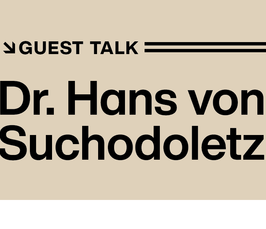
Holocene human-environmental interactions and seismic activity in a Late Bronze to Early Iron Age settlement center in the southeastern Caucasus
Guest talk and Q&A with Dr. Hans von Suchodoletz
- Date: Jun 23, 2022
- Time: 02:00 PM - 03:00 PM (Local Time Germany)
- Speaker: Dr. Hans von Suchodoletz, Research Fellow, Institute of Geography, University of Leipzig
- Location: Hybrid
- Room: Villa V14 and Zoom
- Host: IMPRS-SHH
- Contact: quante@shh.mpg.de

Lecture Abstract
Long-term human-environmental interactions in naturally fragile drylands are an actual topic of geomorphological and geoarchaeological research. Furthermore, many prehistoric societies in drylands were also affected by seismic activity. The semi-arid Shiraki Plain in the tectonically active southeastern Caucasus is currently covered by steppes and largely devoid of settlements. However, numerous Late Bronze to Early Iron Age city-type fortified settlements suggest early state formation between ca. 3.2 – 2.5 ka that abruptly ended after that time. A paleolake was suggested for the lowest plain, and nearby pollen records suggest forest clearcutting of the upper altitudes under a more humid climate during the Late Bronze/Early Iron Ages. Furthermore, also an impact of earthquakes on regional Early Iron Age settlements was suggested. However, regional paleoenvironmental changes and paleoseismicity were not systematically studied so far.
We
combined geomorphological, sedimentological, chronological,
paleoecological and hydrological modelling data to reconstruct regional
Holocene paleoenvironmental changes in the Shiraki Plain, and identify
possible natural and anthropogenic causes as well as possible seismic
events during the Late Bronze/Early Iron Ages. Our results show a
balanced to negative Early to Mid-Holocene water balance probably caused
by forested upper slopes. Hence, no lake but an incipient Chernozem
developed in the lowest plain. Following, Late Bronze/Early Iron Age
forest clear-cutting obviously caused lake formation and the deposition
of lacustrine sediments derived from intensive soil erosion.
Subsequently, regional aridification obviously caused slow lake
desiccation. Remains of freshwater fishes indicate that the lake
potentially offered valuable ecosystem services for regional prehistoric
societies even during the desiccation period. Finally, colluvial
coverage of the lake sediments during the last centuries could have been
linked with hydrological extremes during the Little Ice Age. Our study
demonstrates that the Holocene hydrological balance of the Shiraki Plain
was and is situated near a major hydrological threshold, making the
landscape very sensitive to also small-scale human or natural influences
with serious consequences for local societies. Furthermore, seismites
in the studied sediments do not indicate an influence of earthquakes on
the main and late phases of Late Bronze/Early Iron Age settlement.
Altogether, our study underlines the high value of multi-disciplinary
approaches to investigate long-term human-environmental interactions and
paleoseismicity in drylands on millennial to centennial time scales.
About the speaker
Dr. Hans von Suchodoletz is a physical geographer with a focus on Quaternary geology, geomorphology and geoarchaeology, and aims to reconstruct the Pleistocene and Holocene landscape evolution and human-environmental interactions. During his research he studies fluvial, colluvial, aeolian and lacustrine terrestrial sediment archives and paleosols as well as their surrounding landscape contexts. His spatial research focus is on naturally fragile landscapes such as drylands, mountain regions and loess-covered areas.